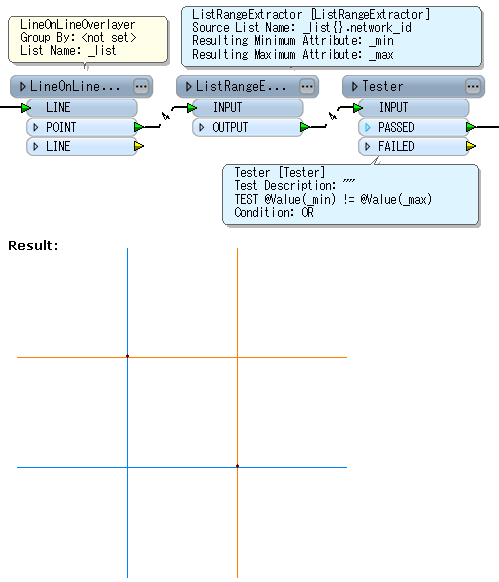I know there's a "group by" for the Line on Line Overlayer and the Spatial Filter, but what I really want is a "not grouped by".
That is, how do I only find intersects of lines that have different values for the attribute I'm interested in?
The particular case I'm looking at is a bunch of lines that have an attribute that identifies them as part of a network. I only want to find where two networks intersect, not where all the lines intersect lines of the same network.
Lists seem really memory-consuming when there are lots of features, so I'm wondering if there's a more obvious solution.






 Use of a list is not likely to be avoided, but I think it's not so inefficient if the list will not be exploded. Hope more efficient solutions will be provided by somebody.
Use of a list is not likely to be avoided, but I think it's not so inefficient if the list will not be exploded. Hope more efficient solutions will be provided by somebody.
